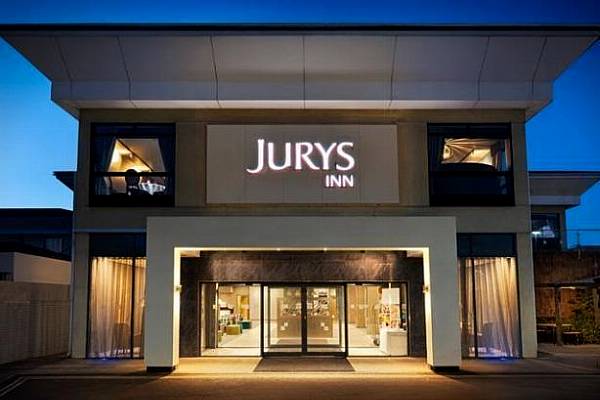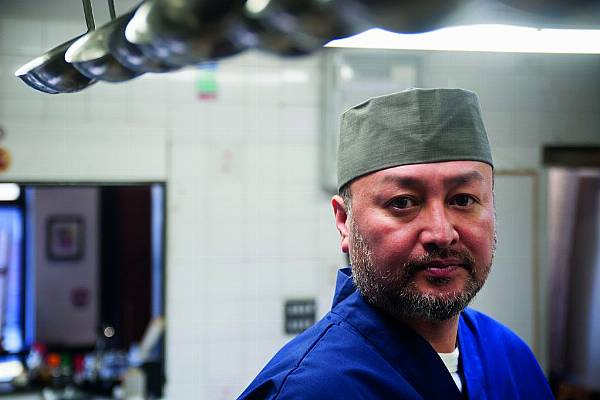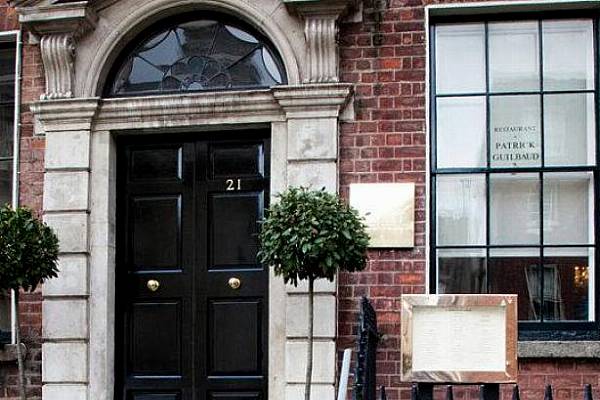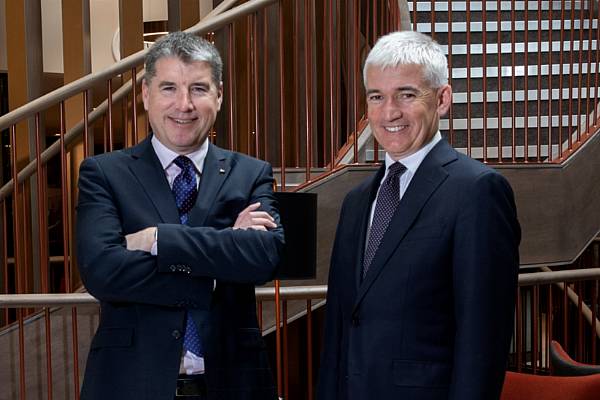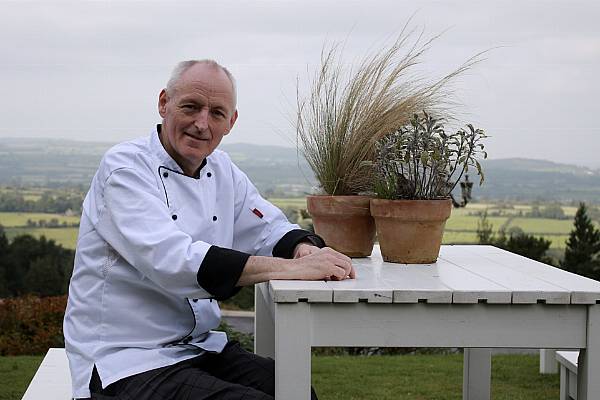Since its launch, the response to the Wild Atlantic Way has been overwhelmingly positive. But how has the much-lauded Bord Fáilte tourism initiative actually impacted hoteliers in the various regional centres along the 2,500km touring route? Andrew Jennings investigates.
In April, hundreds of international buyers attended the annual Meitheal event at the RDS in Dublin, which is billed as Ireland’s largest travel trade fair.
Tourism Minister Paschal Donohoe was present at the event and brought with him some noteworthy news for those in attendance in the shape of the launch of a new touring region in Ireland. ‘Ireland's Ancient East’, focusing on major historical landmarks in the south and east of the country, was officially introduced to much curiosity from the Irish hospitality industry.
The new route, said Donohoe, has aims to be the east’s answer to the Wild Atlantic Way in the west, showcasing the best of Irish heritage and historical attractions down the eastern seaboard, which will hopefully encourage tourists to take overnight tours, instead of visiting one or two big sights before bolting back to Dublin. Fáilte Ireland has stated that 'Ireland's Ancient East' could increase visitor revenue by 25 per cent to €950 million by 2020, bringing an extra 600,000 visitors to the region. Although no investment figure was officially announced, the project is expected to be similar in scope to the Wild Atlantic Way, which Fáilte Ireland poured €10 million into developing. The new initiative is the latest play by the country’s tourism chiefs to hitch a ride on the back of Ireland’s improving economic outlook and the rising number of tourists visiting the Ireland from overseas.
According to the latest CSO figures, visitor numbers were up 14 per cent in the first three months of the year compared to the same period last year. The number of visits from North America was up by 6.9 per cent, while visits from mainland Europe were up by 17.6 per cent. Great Britain registered an increase of 14.2 per cent, with visits from the rest of the world increasing by 9.4 per cent. Meanwhile, the total number of overseas trips made by Irish residents during the same period increased by 13.2 per cent to 1.3 million.“The visitor numbers from mainland Europe are very encouraging, with visitor numbers from France increasing by 26.1 per cent, Spain by 28.1 per cent, while visitor numbers from Italy were up by a remarkable 36.2 per cent,” said Minister Donohoe.
It’s too early to envisage how ‘Ireland’s Ancient East’ might eventually augment this improvement in the influx of tourists to Ireland, but few can now argue that its predecessor out west, launched early last year, has proved something of a boon for tourism on that side of the country. Billed as the world’s longest defined coastal touring route, the Wild Atlantic Way has been widely reported to be a welcome shot in the arm for the hospitality sector in the western half of the country.
The Wild Atlantic Way is big and bold, and even welcomed royalty last month when his Royal Highness Prince Charles and the Duchess of Cornwall visited the region. Fáilte Ireland CEO Shaun Quinn even managed to brief the Duchess as she sampled typical examples of local produce from along the Wild Atlantic Way at a special event at The House Hotel, Galway designed to highlight the close ties between Ireland and the UK’s tourism and food and drink sectors.
“We were delighted to introduce the Duchess of Cornwall to some of the delights of the Wild Atlantic Way,” said Quinn. “The coverage from this royal visit will provide a fantastic boost to the appeal of the Wild Atlantic Way in Britain – our largest overseas market. “This event was a unique opportunity for HRH to not only experience Ireland’s breath- taking coastline but to literally get a taste for some of the sights, sounds and flavours the Wild Atlantic Way has to offer.” So, with tourist numbers spiking and the route now firmly entrenched in the general public’s thinking, the Wild Atlantic Way looks – on the surface at least – like a masterstroke on the part of Fáilte Ireland.
At the Coalface
The question Hospitality Ireland poses is whether the positive vibes surrounding the Wild Atlantic Way have had much of a tangible effect on business for hotel proprietors on the ground in that region of the country? Or are they still struggling in their attempts to lure tourists away from Dublin? On the whole, the reaction has been favourable, although this does come with several caveats in relation to some long- standing challenges facing the hospitality sector in the west of Ireland. “It’s a great initiative from Tourism Ireland and it is mentioned by agents and tour operators from outside Ireland quite a lot,” says Gerry Browne, sales and marketing director at Killarney Hotels, whose stable includes upmarket Co. Kerry establishments like The Europe Hotel & Resorts, The Dunloe and
Ard na Sidhe Country House Fossa. Browne adds that so far this year he’s seen a good pickup in business for the three hotels, revealing that it “looks like its going to be a very good year.” He says that there’s been plenty of interest from across the Pond in the Wild Atlantic Way.“US business has increased this year, which are mostly groups – incentive groups. There’s also been an increase from the UK, this has been mostly FITs (flexible independent travellers).” Despite welcoming the benefits of the initiative, Browne believes that the biggest challenge facing its success relates to access. “The biggest challenge is access from Europe, with not enough flights in and out of Cork in particular. Also, a US flight into Cork would be great.”
Boost to the Economy
The Wild Atlantic Way is in one sense an attempt to “monetise” the natural beauty of the west coast of Ireland. In the light of a history of emigration, lack of infrastructural and industrial investment, educational, social and economic problems, it’s perfectly understandable and welcome any attempt to boost the economy and create jobs along the western seaboard.
“The Wild Atlantic Way is proving to be instrumental in addressing the regional imbalance in terms of the distribution of Ireland’s tourism numbers,” says Adrian Noonan, proprietor at Knockranny House Hotel & Spa, Westport, Co Mayo. “Ireland has been something of a well-kept secret on an international level and that has been somewhat undervalued from a national tourism promotion perspective.”
International Visitors
Noonan agrees with Browne that the initiative has helped boost the number of international visitors arriving to the West. “We have started to see the number of international visitors increase at Knockranny House Hotel along with a general increase of international visitors to Westport. “Traditionally, the European visitor would travel to Connemara but be reluctant to travel further north. They now have been given a taste of what to expect if they do, with the key discovery points promoted by Failte Ireland. “The domestic market is still dominant in the west of Ireland but the American market is one we are very keen to grow in the coming years,” he says. Noonan reveals that Mayo is working hard to position itself as the “heart of the Wild Atlantic Way”. “We are currently working to position the Knockranny House Hotel & Spa as a destination of choice and luxury on the Wild Atlantic Way.”
Even smaller, more niche, establishments are starting to feel the positive knock-on effects of the Wild Atlantic Way. Coopershill House, a member of the prestigious Ireland’s Blue Book, is one such place. “The Wild Atlantic Way has been very positive for encouraging tourists to visit this part of the north-west,” says proprietor, Simon O’Hara. “We’ve been aware up here that the north- west has had a fundamental marketing problem for years. There are some amazing places to visit here in Sligo, such as Carrowkeel megalithic tombs complex.
This place is older than Newgrange and the Pyramids, however it’s incredible so few people are even aware it exists. Sligo has some amazing spaces to explore so it’s great there’s now an initiative in place to promote the area,” he adds. A grand Irish country house, Coopershill has been in the O’Hara family since it was built in 1774 and Simon is the seventh generation to call it home.
Built on a 500-acre estate not far inland from Sligo town, it’s an attractive proposition for the more well-heeled, seasoned traveller searching for a more authentic experience. “I suppose our place is attractive to people who have travelled a bit already. A lot of our customers travel a lot for work, where they stay in four/five-star chain hotels around the world.
So they want something more. Sometimes the word ‘experience’ is over used, but this the authentic experience, and it is why they visit us,” says O’Hara.
Return to Health
The hospitality trade in Dublin is quickly getting back on its feet following being floored during the recession years. This recovery has been a bit slower to reach the country’s regional centres, yet Noonan admits confidence is returning to the industry in the west. “The sector is improving and there is a sense of confidence in the marketplace that wasn’t there in recent years,” he says.
“Even more than before we need to look after the visitor to Westport, as people now have a sense of the value of their euro and expect a high standard from their breakaway from both a hotel and a service point of view.”There are undoubtedly still challenges facing tourism along the west coast and there remains lingering concerns about the limits to its growth.
If an industry is to be built on the fragile beauty of an un-spoilt landscape, then the sustainable growth of that industry depends on the protection of that fragile beauty. It depends, too, on an educated workforce that appreciates and understands this fragility. Meanwhile, in terms of maintaining a sustainable push in attracting visitors to the Wild Atlantic Way, Noonan admits that the West still has several obstacles to hurdle. “There are a series of tourism challenges facing the West,” he says. “These include the ongoing need to develop quality signature points and other destinations of interest, or ‘pull-factors’, to allow us to entice Wild Atlantic Way travellers to stop and stay along the route.
Whilst the promotion of the Wild Atlantic Way is crucial in creating awareness of the Atlantic coast experience and all that it has to offer, there is nevertheless an ongoing need to continually invest in brand development and awareness.” He adds that there are undoubtedly untapped opportunities for tourism in the various regions in the west, including the fact that there is still limited international tourism awareness of some areas, the potential for additional infrastructural and access investment in terms of Ireland West Airport Knock and the N5 (as primary access routes), plus a recent resurgence in domestic tourism, especially around activities and ‘experience’-based shorter breaks. “We need to further build on this,” says Noonan.


